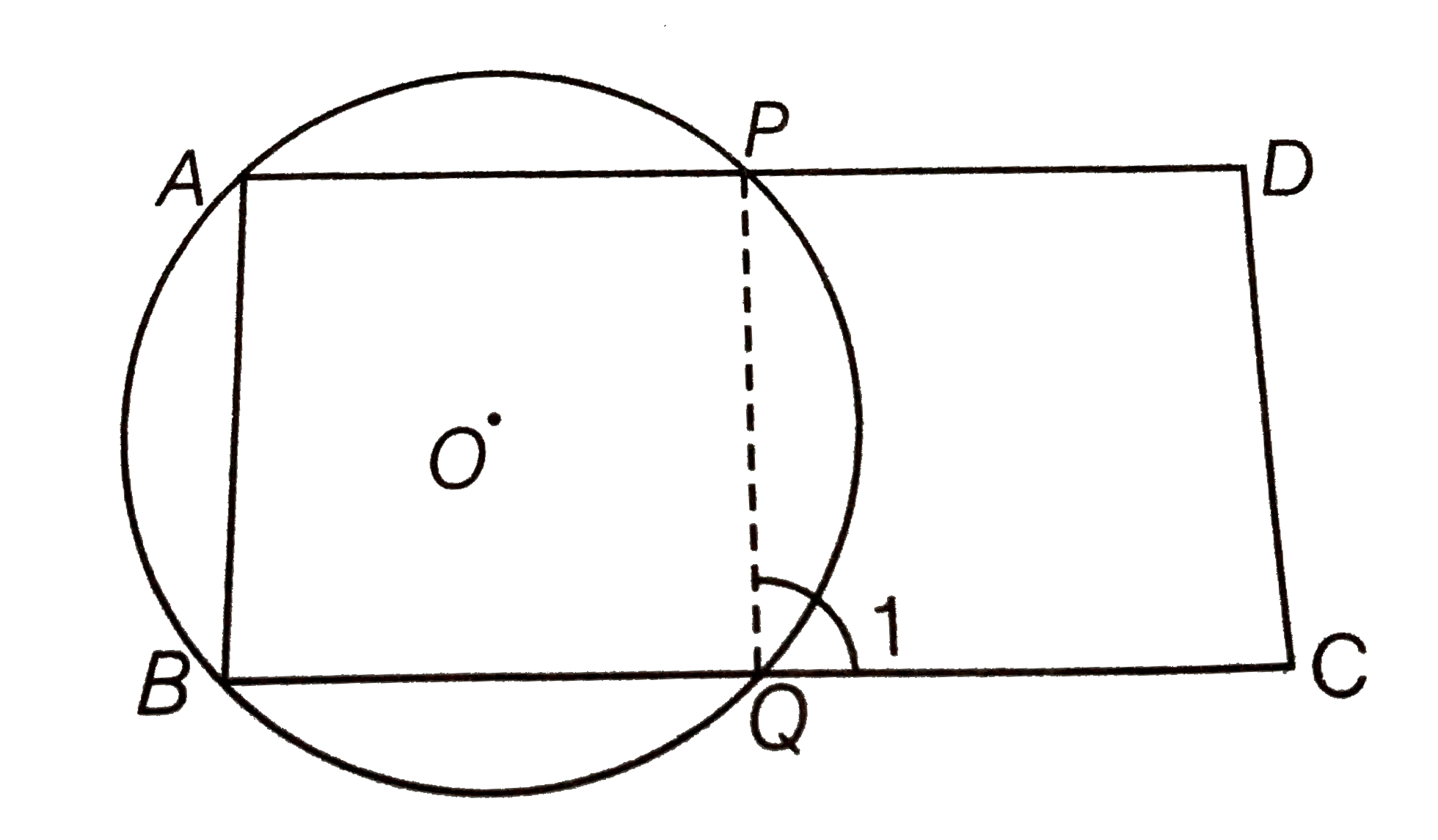Given ABCD is a parallelogram. A circle whose centre O passes through A, B is so drawm that it intersect AD at P and BC at Q
To prove Points P, Q, C and D are con-cyclic.

Construction Join PQ
Proof `angle1=angleA` [exterior angle property of cyclic quadrilateral]
But` angleA=angleC` [opposite angles of a parallelogram]
`:. angle1=angleC` ...(i)
But `angleC=angleD=180^(@)`
[sum of cointerior angles on same side is `180^(@)`]
`rArr angle1+angleD=180^(@)` [from Eq. (i)]
Thus, the quadrilateral QCDP is cyclic.
So, the points P, Q ,C and D are con-cyclic.